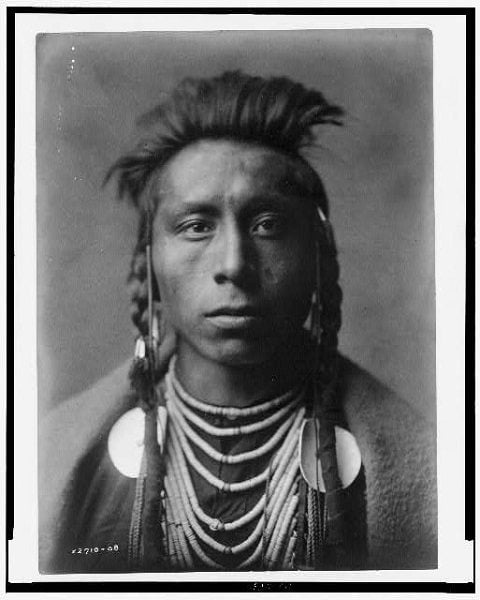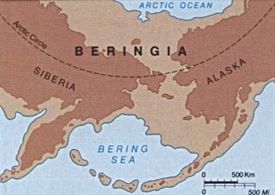You really are on the spectrum, friend.
You are not on the spectrum, my friend. And that's a problem, because it holds Black society back.
I’ve been to the Amazon and I have seen what Amerindians look like. They have darker skin and straight hair like in those classical drawings. We also have old pictures of Indians, so we know what they looked like at the time. Tareeeeek has been spreading this misinformation online and in the museeeeeum. He the high school drop out makes REAL Black scholarship look foolish and a joke, with the spread of this pseudo intellectual armchair plebiscite!
Ancient DNA From Frozen Hair May Untangle Eskimo Roots
https://www.science.org/doi/10.1126/science.320.5880.1146b
If Black Americans stem from various ethnic groups in the Americas, since the Paleolithic. These ABOS-FBA people need to explain why Black Americans have tropical adapted limb ratio and body portions metric similar to sub Sahara Africans, while actual native Americans aren’t tropical adapted in body portions and limb ratio? We actually have old burial places to do osteological test on, either with genetic or metrical data of cranium and post-cranium metrics.
“Thirteen of the 18 haplogroups previously observed in African populations were observed in the African American populations: L1a, L1b, L1c, L2a, L2b, L2c, L3b, L3d, L3e1, L3e2, L3e3, L3e4, and L3f”
Genetic polymorphism along mitochondrial DNA (mtDNA) defines population-specific signatures called mtDNA haplogroups. Estimation of mtDNA haplogroup distribution may be prone to errors, notably if the study sample is not drawn from a multicenter ...

www.ncbi.nlm.nih.gov
(Derek C. Johnson et al., Mitochondrial DNA. 2015 Jun; 26(3): 445–451. , Mitochondrial DNA diversity in the African American population)
“In this context, the Dominican Republic is in line with the observations from other Caribbean and non-Caribbean American regions. All the mtDNA African lineages account for 61% of the maternal haplogroups, with the most frequent mtDNA lineages being the sub-Saharan L1c, L2a, L3b, and L3d, all reaching frequencies higher than 10%. Y Haplogroup Diversity of the Dominican Republic: Reconstructing the Effect of the European Colonization and the Trans-Atlantic Slave Trades”
The Dominican Republic is one of the two countries on the Hispaniola island, which is part of the Antilles. Hispaniola was affected by the European colonization and massive deportation of African slaves since the XVI century and these events heavily ...

www.ncbi.nlm.nih.gov
(Eugenia D’Atanasio et al.)
Whereas: “All Native American mtDNA can be traced back to five Haplogroups called A, B, C, D, and X. More specifically, Native American mtDNA belongs to sub-haplogroups that are unique to the Americas and not found in Asia or Europe: A2, B2, C1, D1, and X2a (with minor groups C4c, D2, D3, and D4h3)”
If you’re interested in DNA, Native American History, or genetic genealogy, then you’re undoubtedly heard of a new paper from PLoS ONE called “The Phylogeny of the Four Pan-American mtDNA Haplogroups: Implications for Evolutionary and Disease Studies.” The authors, from… Continue reading →

thegeneticgenealogist.com
(Roberta Estes, DNA Explained, November 2016)
“SCD occurs among about 1 out of every 365 Black or African-American births. SCD occurs among about 1 out of every 16,300 Hispanic-American births. About 1 in 13 Black or African-American babies is born with sickle cell trait (SCT)”.
Read data highlights about sickle cell disease.

www.cdc.gov
"According to the study, having mainly African genetic ancestry can reduce a person's chances of finding a donor by up to 60%, and having African copies of HLA genes, which must be compatible with the donor's to make a transplant possible, can reduce them by 75%."
[..]
According to Meyer, the team cannot yet answer the question regarding the degree to which admixture and the percentage of African ancestry hinder a match. "These two things are a little different. What we know is that on average people with African HLA genes tend to have more difficulty than people with European ancestry," he said. "It remains to be seen if there are combinations of European and African chromosomes that can also reduce the probability of a match.”
A match of HLA loci between patients and donors is critical for successful hematopoietic stem cell transplantation. However, the extreme polymorphism of HLA loci – an outcome of millions of years of natural selection – reduces the chances that two ...

www.ncbi.nlm.nih.gov
"The study found that white blood cell counts may be low due to a rs2814778-CC variant in the promoter of the atypical chemokine receptor 1-coding gene ACKR1. While this variant is relatively uncommon in individuals of European ancestry, it appears to be found in more than 60 percent of African Americans and is found at especially high frequency in some populations from sub-Saharan Africa.”
A significant subset of African Americans may be genetically predisposed to low white blood cell counts, suggesting this feature alone may not warrant bone marrow biopsies.

www.genomeweb.com
'Tropically adapted groups also have relatively longer distal limb elements (tibia and radius, as compared to femur and humerus) than groups in colder climates."
(Matt Cartmill, Fred H. Smith - 2011)
"What we can say, however, is that in the Holocene, humans from southwest Asia do not exhibit tropically adapted body shape (Crognier 1981; Eveleth and Tanner 1976; Schreider 1975)...."

www.publicanthropology.org
(Trenton Holliday (2000) Evolution at the
Crossroads: Modern Human Emergence in Western
Asia. American Anthropologist. New Series,
Vol. 102, No. 1, 54-68)
"In fact, in terms of body shape, the European and the Inuit samples tend to be cold-adapted and tend to be separated in multivariate space from the more tropically adapted Africans, especially those groups from south of the Sahara."
Given the well-documented fact that human body proportions covary with climate (presumably due to the action of selection), one would expect that the Ipiutak and Tigara Inuit samples from Point Hope, Alaska, would be characterized by an extremely cold-adapted body shape. Comparison of the Point...

pubmed.ncbi.nlm.nih.gov
(Holliday TW, Hilton CE., Body proportions of circumpolar peoples as evidenced from skeletal data: Ipiutak and Tigara (Point Hope) versus Kodiak Island Inuit).
“Migration within a larger time framework took place ca. 15,000–18,000 BP, when the first Asian populations crossed the Bering Strait, ultimately founding the modern Amerindian population. Despite having as much as 18,000 years of selection in environments as diverse as those found in the Old World, body mass and proportion clines in the Americas are less steep than those in the Old World (Newman, 1953; Roberts, 1978). In fact, as Hulse (1960) pointed out, Amerindians, even in the tropics, tend to possess some ‘‘arctic’’ adaptations. Thus he concluded that it must take more than 15,000 years for modern humans to fully adapt to a new environment (see also Trinkaus, 1992). This suggests that body proportions tend not to be very plastic under natural conditions, and that selective rates on body shape are such that evolution in these features is long-term."
Body proportions covary with climate, apparently as the result of climatic selection. Ontogenic research and migrant studies have demonstrated that body proportions are largely genetically controlled and are under low selective rates; thus studies of body form can provide evidence for...

pubmed.ncbi.nlm.nih.gov
(Holliday T. (1997). Body proportions in Late Pleistocene Europe and modern
human origins. Jrnl Hum Evo. 32:423-447)
“Generally narrower body breaths of the foragers contrast mark by with the wider-bodied agriculturalists. Although bi-iliac breadth has been argued to be stable over long periods of time (Auerbach, 2007), this shift in mean body breath may be indicative of changes correlated with subsistence economy."
"In this study, skeletal measures of body size were analysed to evaluate the long-term impact of the transition to agriculture in the Nile Valley. Here we demonstrate that this transition is also associated with a modest reduction and subsequent improvement in stature and body mass. This trend could be broadly interpreted in the context of models of relationship between body size and nutrition."
(Pinhasi & Stock. 2011 Human Bioarchaeology of the Transition to Agriculture)
Haplogroups (Diaspora), Dissecting the Within-Africa Ancestry of Populations of African Descent in the Americas.
Haplogroups (Diaspora)
Dissecting the Within-Africa Ancestry of Populations of African Descent in the Americas
The Lapita
Analysis of ancient DNA from four individuals who lived in Vanuatu and Tonga between 2,300 and 3,100 years ago suggests that the Papuan ancestry seen in present-day occupants of this region was introduced at a later date.

www.nature.com
When it comes to actual peer reviewed scientific research, all I get as a response is laughing emojis. No serious grown man conversation.
 , friend.
, friend., friend.















 www.forbes.com
www.forbes.com


 blog.appacademy.io
blog.appacademy.io


 A very lucrative house party
A very lucrative house partyA very lucrative house party
